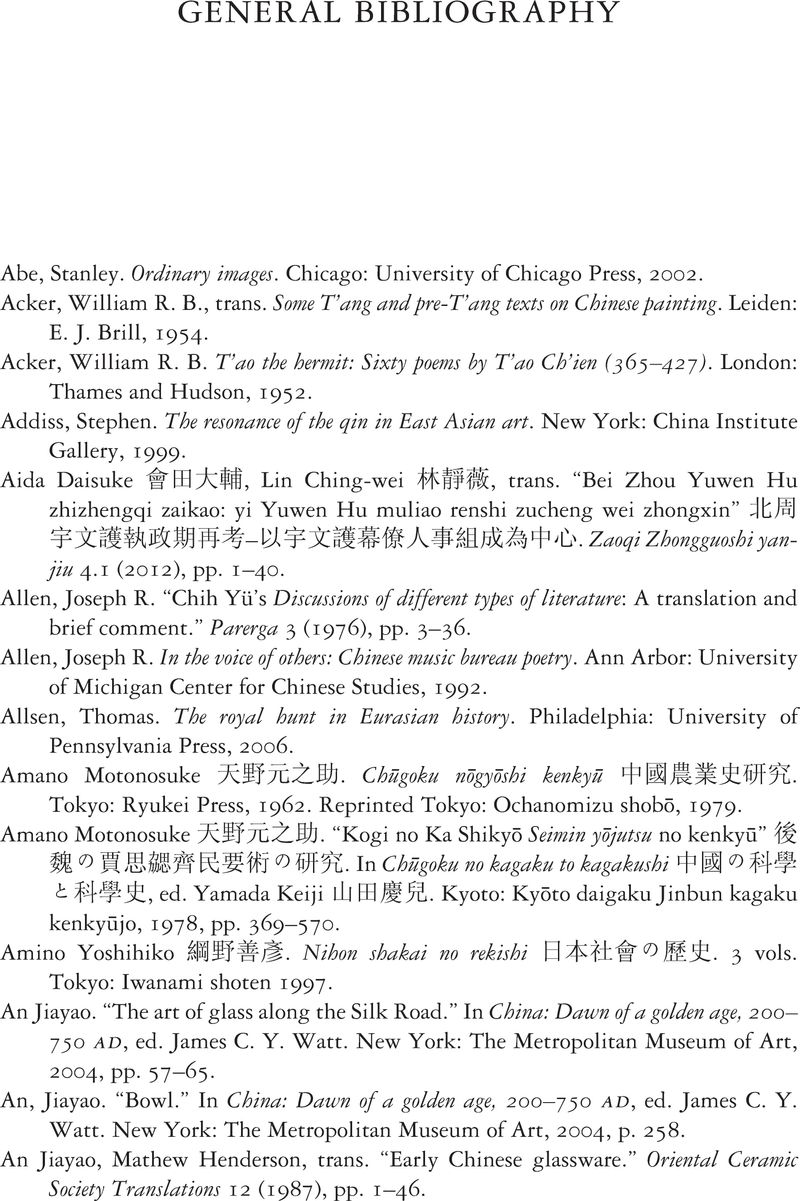Book contents
- The Cambridge History of China
- Copyright page
- Contents
- Figures and Tables
- Maps
- Preface
- Six Dynasties Chronology
- Introduction
- Part 1 History
- Part 2 Society and Realia
- Part 3 Culture, Religion, and Art
- Abbreviations of Frequently Cited Primary Sources
- Journal Titles: Acronyms (single-word titles do not use acronyms)
- List of Asian Journal Titles
- Primary Texts
- General Bibliography
- Glossary–Index
- References
General Bibliography
Published online by Cambridge University Press: 28 October 2019
- The Cambridge History of China
- Copyright page
- Contents
- Figures and Tables
- Maps
- Preface
- Six Dynasties Chronology
- Introduction
- Part 1 History
- Part 2 Society and Realia
- Part 3 Culture, Religion, and Art
- Abbreviations of Frequently Cited Primary Sources
- Journal Titles: Acronyms (single-word titles do not use acronyms)
- List of Asian Journal Titles
- Primary Texts
- General Bibliography
- Glossary–Index
- References
Summary

- Type
- Chapter
- Information
- The Cambridge History of China , pp. 733 - 838Publisher: Cambridge University PressPrint publication year: 2019



